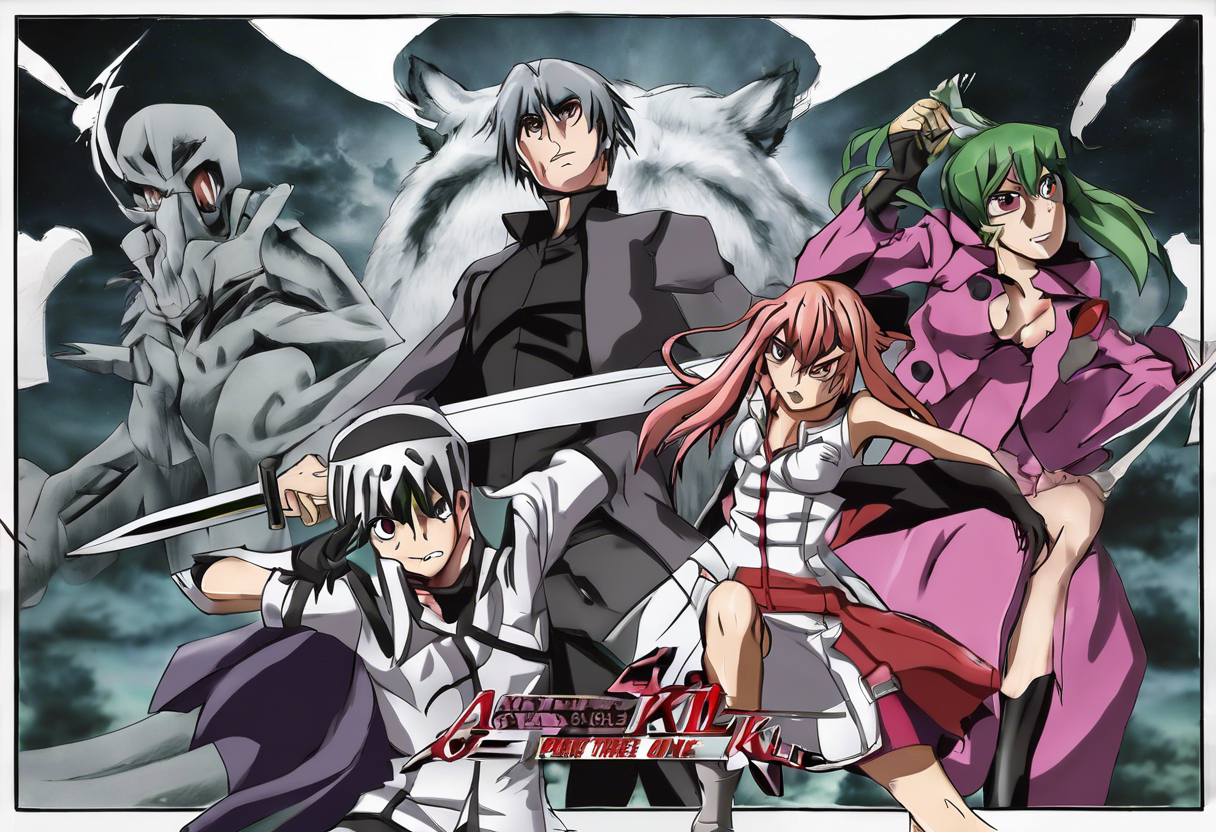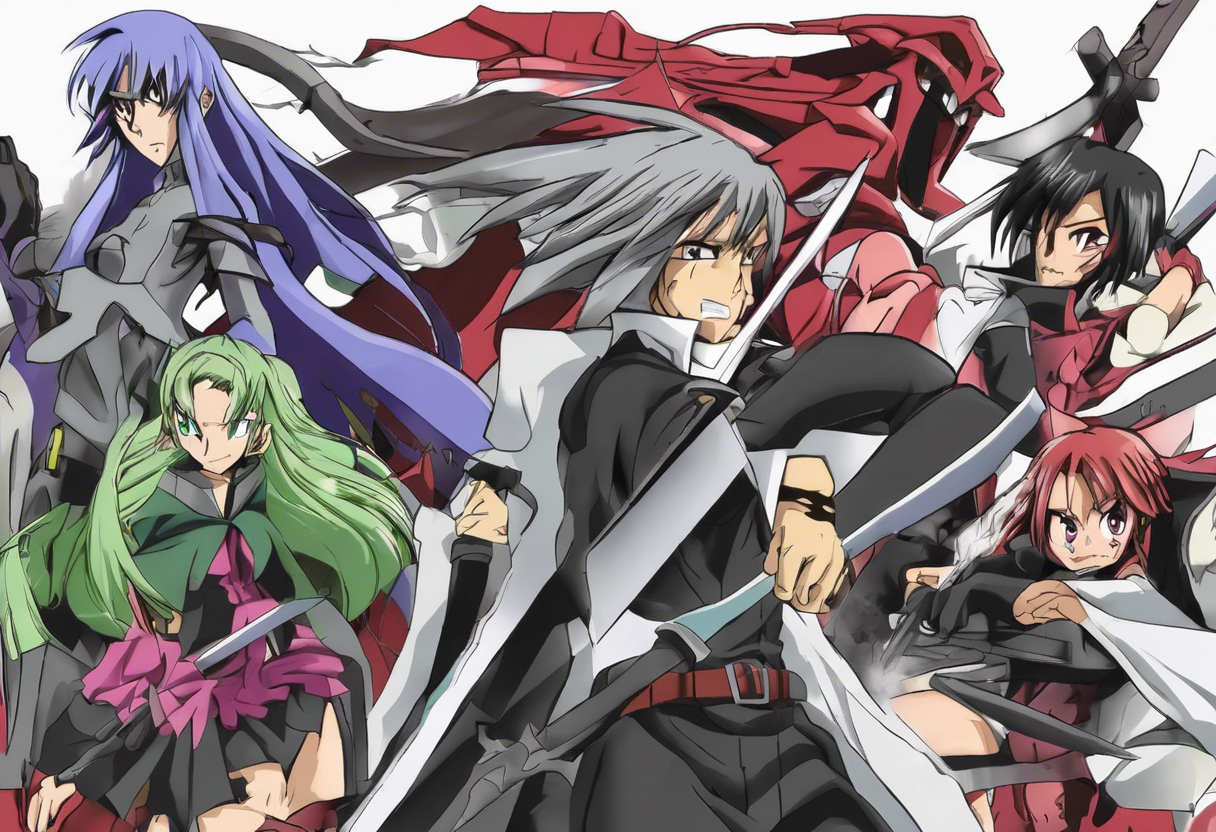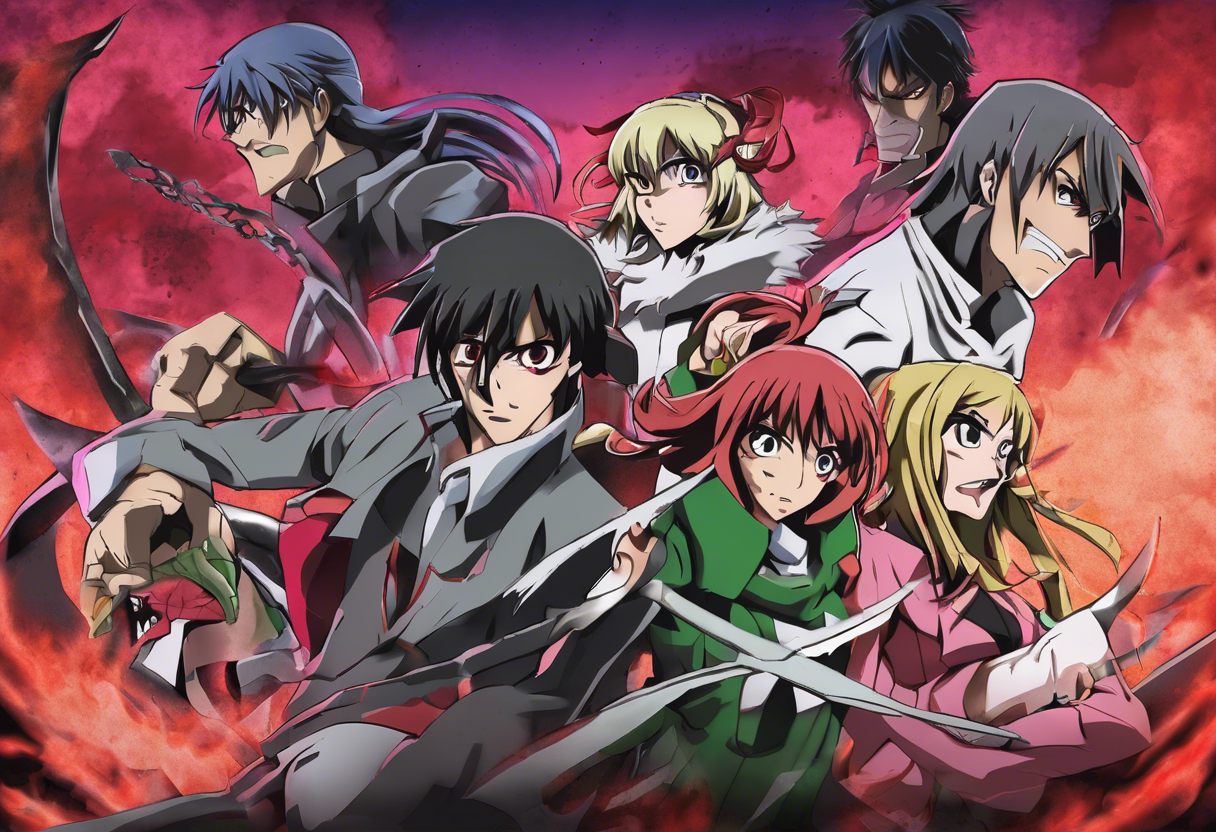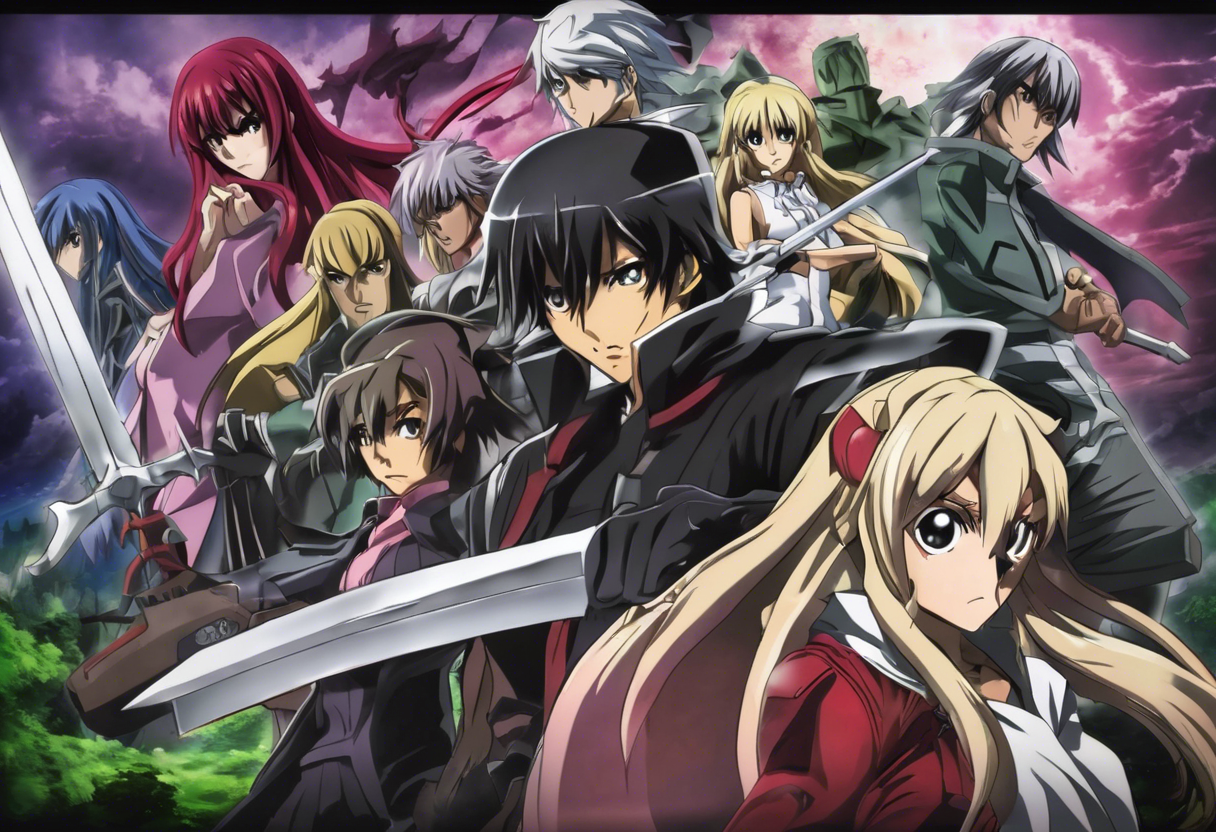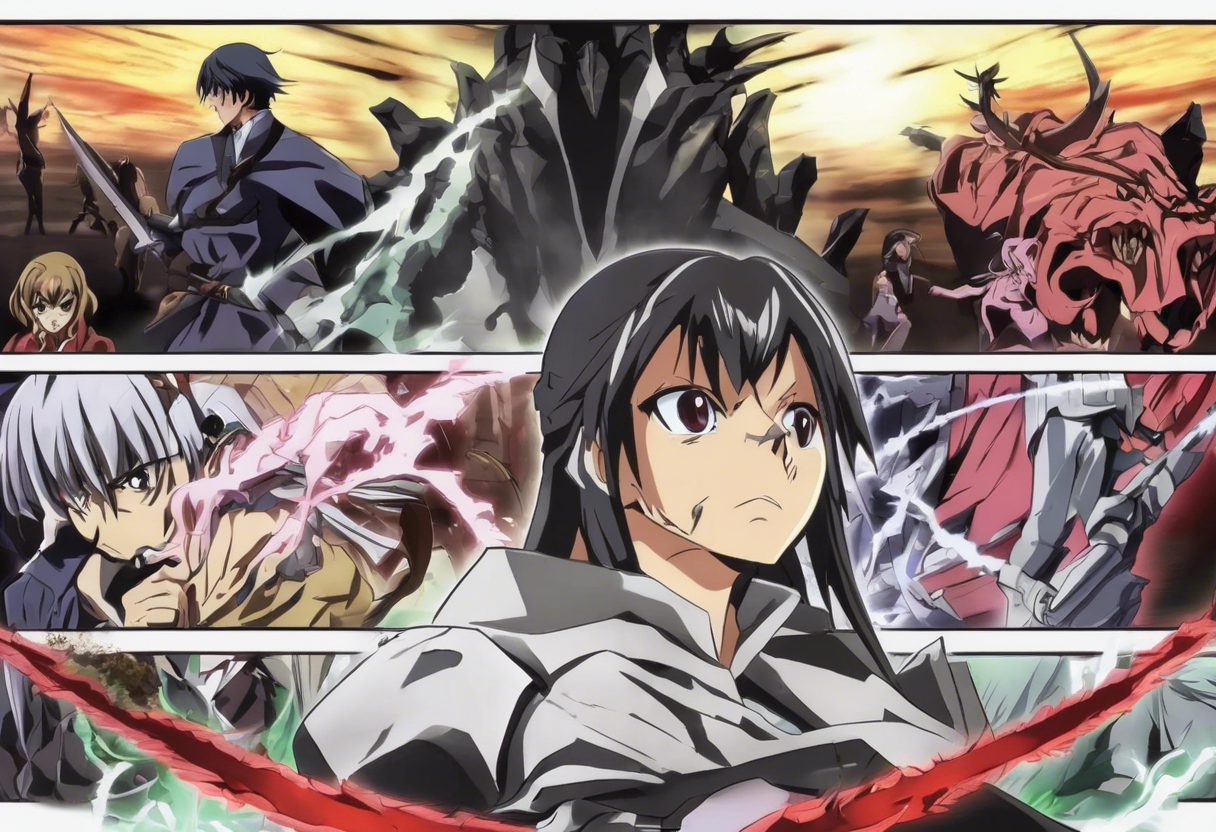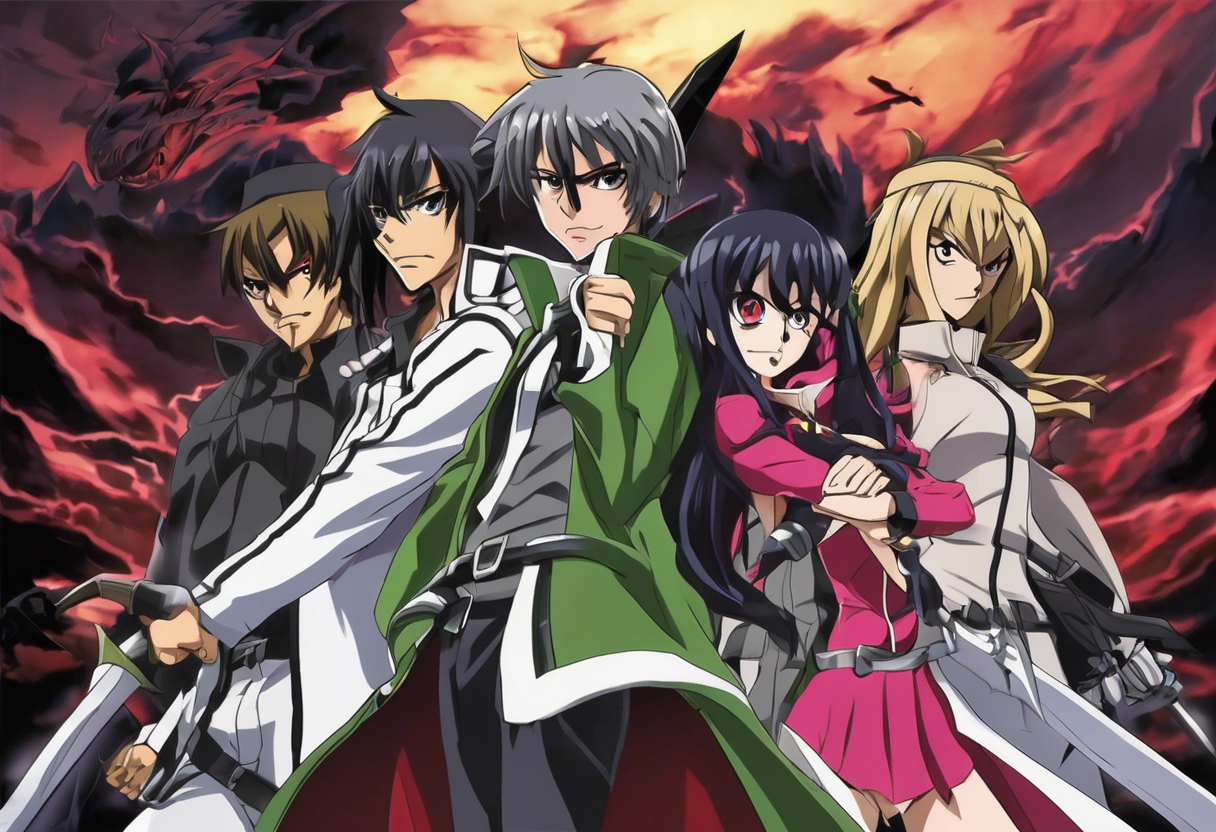Contents
Akame ga Kill – Episode 7: Kill the Three Beasts – Part One
Introduction
Akame ga Kill Episode 7, titled "Kill the Three Beasts – Part One," is a pivotal installment in the anime series adapted from the manga of the same name by Takahiro and Tetsuya Tashiro. The episode was directed by Tomoki Kobayashi, with screenplay by Makoto Uezu, and produced by White Fox. It initially aired on August 17, 2014. This episode stands out within its genre for its intense action sequences, emotional character developments, and the introduction of new conflicts that deepen the narrative.
Akame ga Kill is known for its dark fantasy setting and its exploration of themes such as morality, survival, and the human condition in a world plagued by corruption and violence. Episode 7 continues this trend, escalating the stakes for the characters and setting the stage for significant plot developments.
Plot Summary
The episode begins with a serene moment between Mine and Akame, highlighting the bond between the members of Night Raid. Mine, still recovering from her injuries, is fed by Akame, showcasing the care and camaraderie within the group. Meanwhile, Tatsumi is seen washing dishes, reflecting on his recent struggles and vowing not to die or make Akame sad, emphasizing his determination to protect his comrades and strive for a better future[2][4].
The main plot unfolds as Esdeath returns with her subordinates, leading to the division of Night Raid into smaller sections to protect various targets from the Three Beasts, a formidable trio of Imperial Arms users. The Lady Boss assigns specific missions to each duo: Tatsumi and Bulat are tasked with protecting a guest on an ocean liner, while Akame and Leone are charged with safeguarding a village[3][4].
Tatsumi and Bulat’s mission becomes the central focus of the episode. They board the ocean liner, where they encounter the Three Beasts—Daidara, Nyau, and Liver—who use a flute-like Imperial Arms to put everyone on the ship to sleep. Tatsumi, through sheer will and determination, manages to stay awake and engages in a fierce battle with Daidara. Despite being outmatched, Tatsumi’s resolve keeps him fighting until Bulat intervenes, saving him from certain defeat[5].
Bulat’s skills are on full display as he takes on the Three Beasts. His fight against Daidara is particularly intense, with Bulat ultimately slicing the brute in half. However, this victory is short-lived, as it is revealed that Bulat has a past connection with one of the Three Beasts, adding a layer of complexity to the narrative[5].
Meanwhile, Leone’s excitement and overconfidence are highlighted as she is tasked with spying on Esdeath. Her eagerness to take down Esdeath alone raises questions about her maturity and judgment, adding a layer of tension to her subplot[4].
The episode culminates in a dramatic and emotionally charged scene where Bulat faces off against Liver, the oldest member of the Three Beasts. Their battle is not just about physical strength but also about the emotional baggage they both carry. Bulat’s eventual death at the hands of Liver is a poignant moment, marking a significant loss for Night Raid and underscoring the high stakes of their missions[4][5].
Themes and Symbolism
Episode 7 of Akame ga Kill delves deeply into several central themes that are characteristic of the series. One of the most prominent themes is the cost of survival in a world filled with violence and corruption. The characters are constantly faced with life-or-death situations, and the episode highlights the emotional toll this takes on them. Bulat’s sacrifice, in particular, symbolizes the selflessness and bravery that define the members of Night Raid.
Another significant theme is the exploration of human connections and camaraderie. The bond between Tatsumi and Bulat, as well as the care shown by Akame towards Mine, underscores the importance of relationships in a world where death is ever-present. These moments of tenderness contrast sharply with the brutal action sequences, adding depth to the narrative.
The episode also touches on the theme of determination and willpower. Tatsumi’s refusal to give up despite being outmatched by Daidara, and Bulat’s final stand against the Three Beasts, illustrate the resilience of the human spirit in the face of overwhelming odds.
Cultural Impact
Upon its release, "Kill the Three Beasts – Part One" received significant attention for its intense action scenes and emotional character moments. The episode’s dramatic turn of events, particularly Bulat’s death, resonated with audiences and sparked discussions about the series’ bold storytelling.
The episode’s influence can be seen in how it has been referenced and discussed in various anime communities and forums. The dramatic fight scenes and the emotional weight of the characters’ sacrifices have made it a memorable installment in the series.
Critical Reception
Critics and audiences alike praised Episode 7 for its intense action sequences and emotional depth. The fight scenes between Tatsumi, Bulat, and the Three Beasts were particularly lauded for their choreography and tension. However, some critics noted that the episode’s pacing could be uneven at times, with some scenes feeling rushed while others were more drawn out.
The emotional impact of Bulat’s death was widely praised, with many considering it a turning point in the series. The character development and the way the episode balanced action and drama were also highlighted as strengths.
Legacy
"Kill the Three Beasts – Part One" remains a significant episode in the Akame ga Kill series, known for its impactful storytelling and memorable characters. The episode’s influence can be seen in how it has inspired other anime series to explore similar themes of survival, camaraderie, and the human condition.
The episode continues to be a point of discussion among fans and critics, with its dramatic moments and intense action sequences making it a standout in the series. As part of the broader narrative of Akame ga Kill!, this episode plays a crucial role in setting the stage for the series’ climax and reinforcing its themes of sacrifice, determination, and the bonds between characters.
References
- https://akamegakill.fandom.com/wiki/Episode_7
- https://animevice.fandom.com/wiki/Episode_7_(Akame_ga_Kill!)
- https://www.youtube.com/watch?v=GTEUj8isfdQ
- https://yametekudasaii.wordpress.com/2014/08/22/akame-ga-kill-episode-7-goodbye-bulat/
- https://bloganimeguru.wordpress.com/2014/08/22/akame-ga-kill-episode-7/

